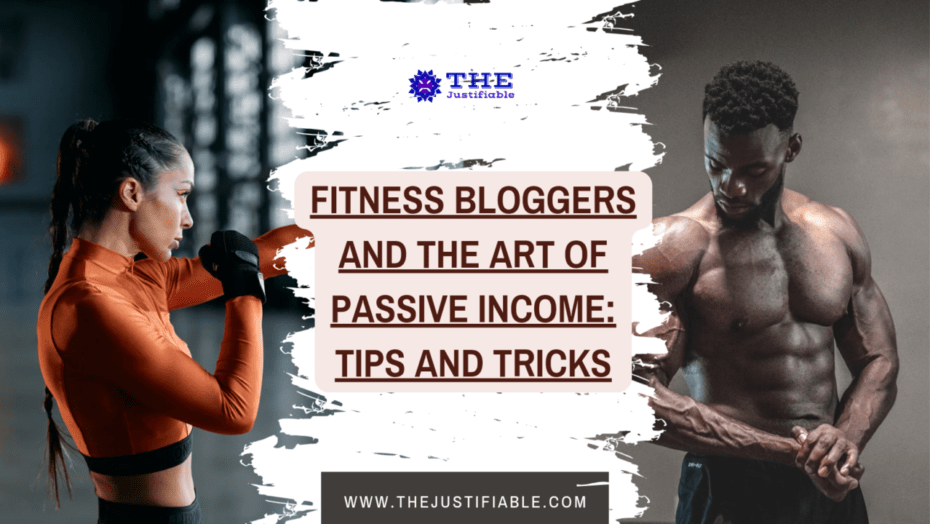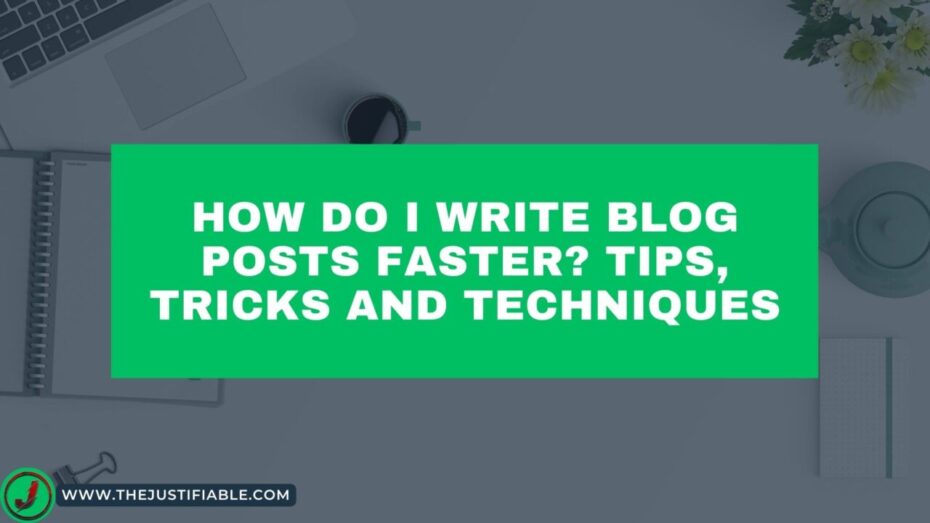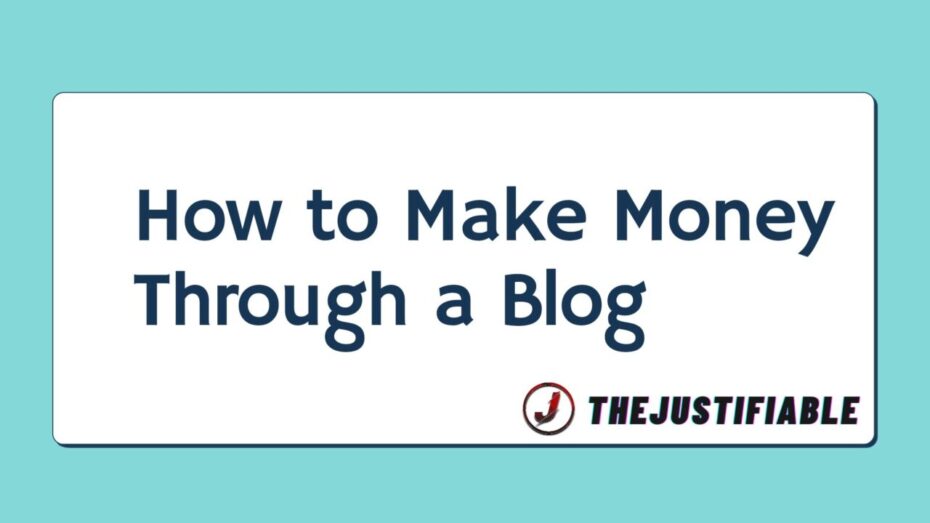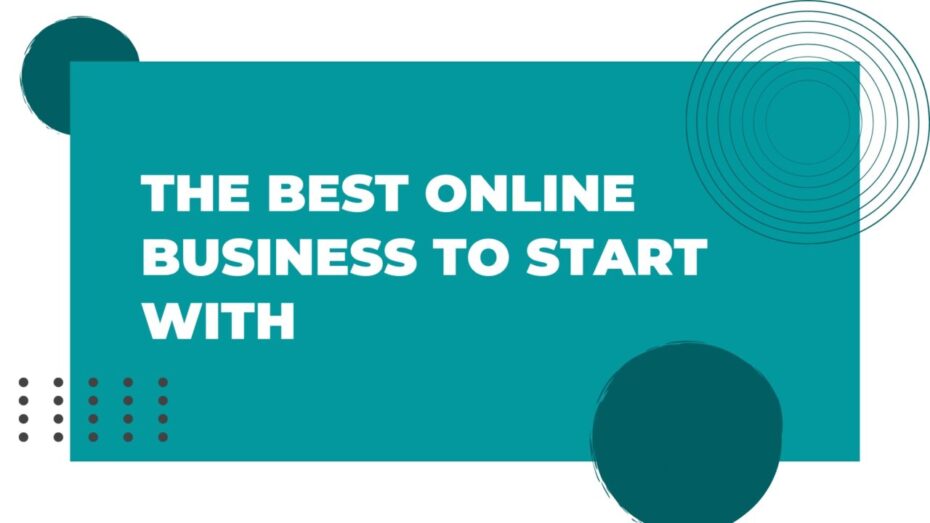Disclosure: This post contains affiliate links, which means that if you click on them and make a purchase, I will receive a commission. Read our Disclaimer for More.
In today’s digital age, where a significant portion of our lives revolves around online platforms, fitness bloggers have emerged as influential voices guiding countless enthusiasts towards their health goals. These bloggers, with their unique blend of expertise, authenticity, and relatability, have successfully tapped into the burgeoning wellness market.
But beyond inspiring transformations and providing actionable tips, there lies an often underexplored avenue of opportunity – the art of generating passive income. In this article, we delve deep into how fitness bloggers can harness their digital potential not only to inspire but also to build sustainable financial streams.
Understanding Passive Income in the Fitness Blogging Space
The realm of fitness blogging has undergone significant evolution over the last decade. With millions turning to digital platforms to seek guidance on their fitness journeys, the space has brimmed with opportunities, especially in terms of passive income. But what exactly is passive income, and why is the fitness niche particularly ripe for such opportunities? Let’s dive in.
What is Passive Income?
In the simplest terms, passive income refers to money earned with little to no daily effort. Unlike an active income, where you trade time for money, passive income streams are set up once and have the potential to generate revenue continuously, without requiring constant attention.
The significance of passive income, especially for fitness bloggers, lies in its ability to provide financial freedom and flexibility. It’s the dream of earning while you sleep, or while you’re busy creating new content or exploring other ventures.
While setting up a source of passive income often demands upfront work, dedication, and sometimes investment, the long-term rewards can be immensely gratifying. For fitness bloggers, this could mean diversifying income streams, thus reducing dependency on a single source and ensuring a more consistent revenue flow, even during times when direct content creation might slow down.
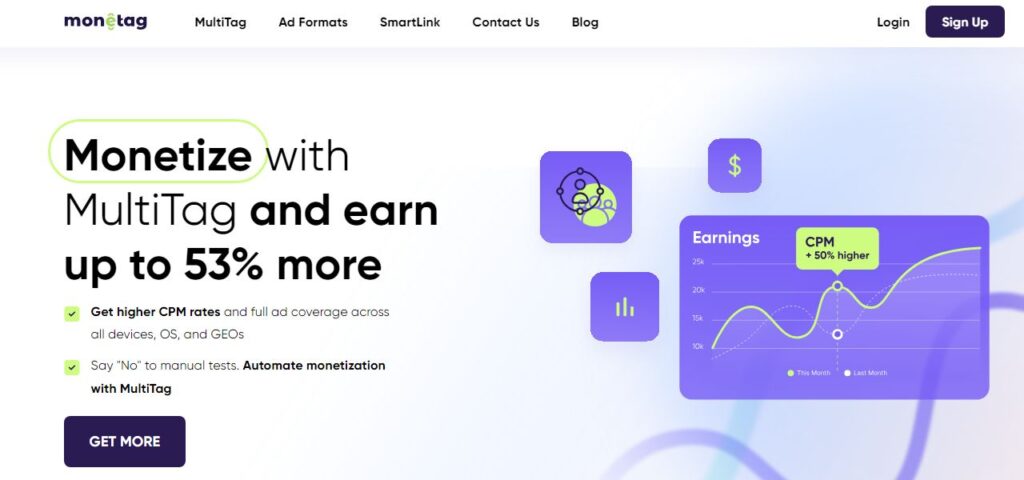

Why Fitness Bloggers are Perfect for Passive Income
The world of fitness is evergreen. People are always in search of ways to lead healthier lives, shed those extra pounds, or achieve their dream physiques. This enduring popularity makes the fitness niche a goldmine for passive income opportunities.
Firstly, the content fitness bloggers produce—be it workout routines, diet plans, or reviews on fitness products—has a long shelf life. A well-constructed workout plan from 2019 can still be relevant and valuable in 2023. By creating evergreen content, fitness bloggers can ensure that their work continues to attract and benefit readers long after its initial publication, leading to sustained earnings.
Secondly, the world of fitness is ever-evolving. With new trends, workouts, diets, and products emerging continually, fitness bloggers are in a unique position to capitalize on these trends. By staying updated and relevant, they can continuously refresh and adapt their content or strategies to cater to new audiences or niches, thus maintaining a steady flow of passive income.
Passive Income Strategies for Fitness Bloggers
As fitness bloggers continually seek to expand their influence and enhance their financial potential, a plethora of passive income strategies has emerged. The beauty of these strategies lies in their adaptability – every blogger can find a method that resonates with their brand, audience, and personal strengths. Let’s delve into some of the most potent avenues that fitness bloggers can explore.
Affiliate Marketing
A classic yet effective monetization strategy, affiliate marketing offers fitness bloggers the opportunity to partner with reputed fitness brands and equipment manufacturers. The concept is straightforward: promote a product or service, and earn a commission for every sale made through your referral link.
This strategy stands out due to its win-win nature. Fitness brands get authentic promotion from trusted voices in the industry, while bloggers earn without having to handle product logistics or customer service. To succeed, it’s essential to choose products that align with your brand’s ethos and are genuinely beneficial for your audience. Remember, authenticity breeds trust, and trust drives sales.


Selling Digital Products
The digital realm has made it incredibly feasible for fitness bloggers to craft and sell their products. E-books detailing specific workout regimes, diet charts tailored for various fitness goals, or even personalized training plans can all be digital goldmines.
Setting up an online store on your blog, or leveraging platforms like Shopify or Gumroad, can facilitate seamless sales. The initial effort in creating these products can lead to an enduring income stream, especially if they are of high quality and address specific pain points or needs of your audience.
Online Courses and Webinars
If there’s one thing the digital age has shown, it’s the world’s insatiable appetite for learning. Fitness bloggers, with their unique expertise, can tap into this demand by creating online courses or hosting webinars.
Platforms like Teachable or Thinkific simplify the course creation process, allowing bloggers to structure their knowledge into digestible modules. Whether it’s a comprehensive guide to pilates, mastering the art of meal prep, or advanced weight training techniques, there’s an audience eager to pay for such expertise. Plus, once a course is live, it can be a consistent source of passive income with minimal ongoing effort.
Sponsored Content and Partnerships
One of the most direct ways to monetize a fitness blog is through sponsored content. Brands are always on the lookout for influencers who can authentically promote their offerings. Collaborations can range from blog posts and video reviews to hosting events or challenges.
However, a word of caution: maintaining authenticity is paramount. Only partner with brands that you genuinely believe in and which align with your audience’s interests. Transparently disclose any sponsored content. It’s not just about compliance; it’s about preserving the trust and rapport you’ve built with your readers. After all, credibility is a fitness blogger’s most valuable asset.
Monetizing Social Media as a Fitness Blogger
In the digital tapestry of today’s online world, social media platforms stand out as vibrant, dynamic hubs of engagement and influence. For fitness bloggers, these platforms are more than just channels to share content; they are potential goldmines for monetization.
Each platform, with its unique features and audience demographics, offers varied avenues for income generation. Let’s explore how fitness bloggers can strategically utilize these platforms to amplify both their reach and revenue.
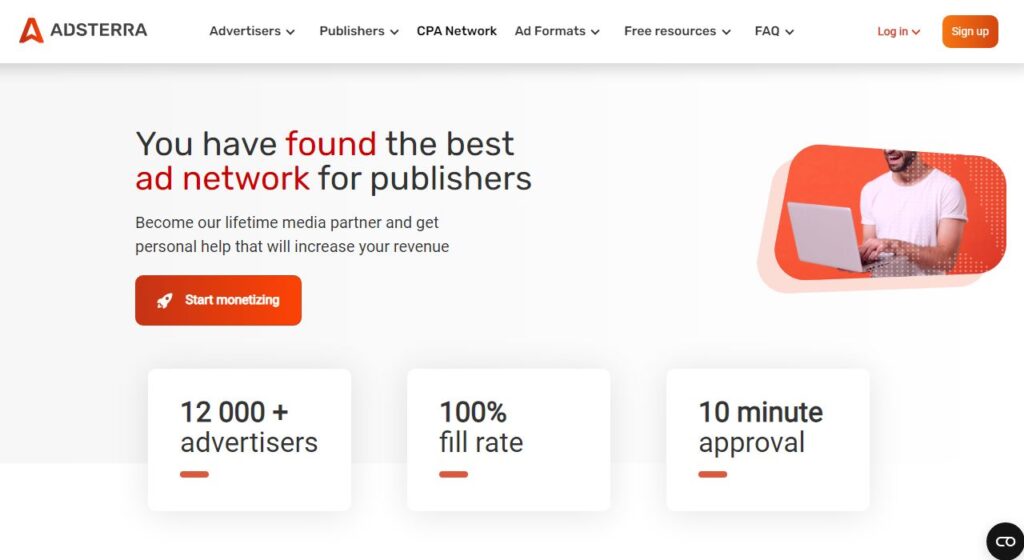

Instagram and YouTube Fitness Channels
Instagram and YouTube, with their visually driven content and massive user bases, are arguably the powerhouses for fitness influencers. Each platform, while overlapping in some features, offers distinct monetization opportunities.
IGTV and Reels: These features on Instagram allow bloggers to share longer-form content, perfect for detailed workouts or informative nutrition guides. As your views increase, so does the potential for monetization, especially when IGTV videos are used in conjunction with ads.
Sponsored posts and collaborations: Brands are continually scouting for influencers on these platforms to promote their products. A single sponsored post, if it aligns with your brand and resonates with your followers, can be quite lucrative. Similarly, YouTube’s vast audience offers a substantial return on sponsored content, especially if your channel has a loyal subscriber base.
Video Monetization: On YouTube, once you meet certain criteria, you can join the YouTube Partner Program, enabling ads on your videos and earning revenue based on views and engagements. It’s a direct and consistent method of monetization for fitness bloggers who regularly publish content.
Using TikTok and Pinterest for Fitness Content
TikTok: The rapid rise of TikTok has proven its potency in content virality. For fitness bloggers, this means a chance to tap into a younger, engaged audience. Viral challenges – like a 30-day fitness challenge or a trending workout dance – can quickly amass views, bringing both visibility and potential brand partnerships.
Pinterest: Often underrated, Pinterest is a treasure trove for fitness bloggers. ‘Fitness pins’, whether they’re workout routines, diet plans, or motivational quotes, have a significant shelf life on this platform. By pinning high-quality content that links back to your blog or store, you can drive consistent traffic and, consequently, monetize through sales or ads on your website.
Both TikTok and Pinterest offer the added advantage of driving traffic back to your primary blog or online store. While direct monetization on these platforms might still be evolving, the indirect revenue through increased traffic and subsequent sales or ad views on your main site can be substantial.
Harnessing the power of social media for monetization requires a blend of authenticity, strategic content creation, and staying updated with platform-specific trends and features. But, with dedication and insight, fitness bloggers can transform these platforms into significant revenue streams.
Utilizing Stories and Live Sessions
The ephemeral nature of Stories – be it on Instagram, Facebook, or even YouTube – can be a boon for fitness bloggers looking to engage their audience in real-time. Here’s how:
Flash Sales and Promo Codes: By announcing limited-time offers or exclusive promo codes for fitness products, e-books, or courses via Stories, bloggers can induce urgency and drive quick sales.
Live Workouts and Q&A Sessions: Live sessions provide an opportunity for real-time interaction. Hosting a live workout or a nutrition Q&A can not only boost engagement but can also be monetized through exclusive memberships or collaborations with brands. For instance, promoting a brand’s product during a live workout can act as a powerful endorsement.
Leveraging Community Features for Monetization
Community features like Facebook Groups or Instagram’s ‘Close Friends’ list offer fitness bloggers a unique monetization avenue.
Exclusive Content: Fitness bloggers can create a VIP or premium group, offering exclusive content, early access to products, or personalized coaching to members willing to pay a subscription fee or one-time access charge.
Peer Support Groups: For fitness bloggers who offer courses or challenges, creating support groups where members can share their progress, ask questions, and motivate each other can add immense value. Such a sense of community can enhance course sales, as buyers often see added value in post-purchase support.
Collaborative Features and Shoppable Posts
Tag Teaming with Fellow Bloggers: Collaboration isn’t just for brands. Teaming up with fellow fitness bloggers for challenges, joint workouts, or product promotions can help tap into each other’s audiences, expanding reach and potential revenue streams.
Shoppable Posts: Platforms like Instagram allow users to shop directly from posts. Fitness bloggers can collaborate with apparel brands, equipment manufacturers, or even promote their digital products through shoppable posts, making the buying process seamless for followers.
Challenges in Building Passive Income Streams
Building passive income streams, especially in the fitness blogging arena, is an enticing goal. It promises financial stability and the dream of earning while you’re away from the screen. However, like any journey, it’s laden with challenges that can make or break your aspirations.
Recognizing these challenges and arming oneself with strategies to combat them can make the path smoother. Let’s delve into some of these challenges and decipher ways to navigate them effectively.
Overcoming Market Saturation
The booming popularity of the fitness niche, while presenting opportunities, also introduces the challenge of market saturation. Every day, numerous fitness bloggers enter the scene, each bringing their unique flavor of content, making it harder to stand out.
Standing out in a crowded niche: In a sea of fitness advice, workouts, and diet plans, what will make a reader choose your content over others? The answer lies in specialization. Instead of catering to broad topics, carve a niche for yourself. Whether it’s keto diets for working professionals, postnatal workouts for new mothers, or holistic wellness for seniors, narrowing your focus can help you become the go-to expert in that domain.
Building a unique personal brand: Beyond the content, readers connect with stories, personalities, and authenticity. Your personal journey, struggles, and victories in the fitness world can be your strongest brand assets. By consistently sharing personal anecdotes, displaying genuine passion, and interacting authentically with your audience, you can foster a loyal community that looks up to your brand, amidst the clutter.
Ensuring Continuous Quality
In the rush to churn out content and stay relevant, there’s a lurking danger of compromising on quality. However, it’s essential to remember that in the long run, quality is what ensures sustained passive income.
Balancing quality with quantity: It’s a tightrope walk. On one side, frequent content boosts visibility and engagement, but on the other, hastily produced content can damage your reputation. The key is to find a rhythm. Instead of daily posts, maybe opt for bi-weekly deep dives into topics. Use content calendars to plan, allocate adequate time for research, and always prioritize the value you’re offering to your readers.
Adapting to changing fitness trends: The fitness landscape is ever-evolving. New research, workouts, and diets are continually emerging. To ensure content quality, fitness bloggers must stay updated. This doesn’t mean hopping onto every trend but discerning which ones align with your brand and audience. Regularly attending webinars, reading latest research papers, and even taking up advanced courses can keep you at the forefront of fitness knowledge, ensuring your content remains top-notch and relevant.
Maintaining Consistency and Motivation
While passive income is the end goal, the journey to reach that point requires consistent effort. The digital space is unforgiving when it comes to inconsistencies, and it’s a challenge to maintain the motivation to continuously produce content and engage with the audience.
Staying Motivated: It’s not uncommon for fitness bloggers to feel burnout, especially when results (in terms of income) are slow to materialize. Here, it’s vital to revisit and remember the ‘why’ behind your blogging journey. Regularly setting short-term and long-term goals can help keep the drive alive. Joining online communities or groups of fellow bloggers can also provide the needed motivation and support, as they offer insights, camaraderie, and a sense of belonging.
Setting a Routine: Consistency doesn’t mean posting content every day, but it does mean setting a routine your audience can rely on. If it’s a weekly podcast, a monthly webinar, or bi-weekly blog posts, stick to the schedule. Utilize tools and platforms that can automate tasks (like scheduled posts) to ensure you’re not overwhelmed.
Diversifying Income Sources without Losing Focus
As the adage goes, “Don’t put all your eggs in one basket.” While it’s essential to diversify your passive income streams, it’s equally crucial not to spread oneself too thin.
Exploring New Avenues: Fitness bloggers should always be on the lookout for emerging platforms or monetization methods. This could be a new social media platform, affiliate marketing opportunities, or even exploring avenues like public speaking or consulting.
Staying True to Your Niche: While diversification is crucial, it should not come at the cost of losing focus on your primary audience or niche. Any new venture or platform you explore should align with your brand’s values and the interests of your core audience.
Case Study: Successful Fitness Bloggers Who Mastered Passive Income
The dream of many entering the fitness blogging space is to turn their passion into a sustainable source of income. While many tread this path, few truly master the art of passive income in this niche. By delving into the success stories of those who’ve made it, we can uncover actionable insights and lessons that can guide aspiring fitness bloggers.
Let’s explore the profiles of some standout fitness bloggers, highlighting their strategies and any potential pitfalls they encountered.
Kayla Itsines – Sweat with Kayla
Kayla Itsines, an Australian personal trainer, became a household name in the fitness industry with her “Bikini Body Guide” (BBG) program. Her journey, which started on Instagram, showcases the power of consistent content and community engagement.
Strategies:
Community Building: Kayla’s success can be attributed to the robust community she built. By showcasing real transformations and encouraging followers to share their journeys using the #BBG hashtag, she fostered a sense of belonging among her followers.
Diversified Products: From e-books to her Sweat app, Kayla understood the importance of diversifying her income sources while keeping them aligned with her brand’s core offerings.
Mistakes/Learnings:
While her journey has mostly been positive, Kayla faced backlash over the “bikini body” terminology, leading her to rebrand and focus on a more inclusive fitness approach. It underscores the importance of evolving with audience sentiments.
Joe Wicks – The Body Coach
Joe Wicks, known as The Body Coach, revolutionized fitness with his short, high-intensity workouts and healthy “Lean in 15” recipes. His success story is a testament to the power of unique content and adapting to platform strengths.
Strategies:
Video Content: Joe leveraged the power of YouTube and Instagram to showcase his workouts, ensuring he remained authentic and relatable in his presentations.
Print and Digital: Not just confining himself to the digital space, Joe has a successful line of cookbooks, showcasing the benefits of diversifying content mediums.
Mistakes/Learnings:
Joe once mentioned the risk of rapid expansion without a clear roadmap. He learned the hard way that while growth is good, it should be sustainable and aligned with the brand’s core values.
Cassey Ho – Blogilates
Cassey Ho’s Blogilates is a vibrant blend of Pilates, pop music, and infectious energy. Her journey from a small YouTube channel to a fitness empire is filled with lessons.
Strategies:
Engagement: Cassey’s monthly workout calendars and challenges keep her community engaged and coming back for more.
Merchandising: Blogilates isn’t just workouts; it’s a brand. From activewear to specialized Pilates equipment, Cassey monetized her brand by offering high-quality products her audience wanted.
Mistakes/Learnings:
Cassey’s openness about her struggles with body image and the pressures of the fitness industry endeared her to many. It’s a reminder that authenticity and vulnerability can be strengths, not weaknesses.
Conclusion
The potential of passive income in the fitness blogging sphere is not just an enticing dream but an achievable reality, as illustrated by the numerous success stories in the domain. With the fitness industry’s ever-growing popularity, now is the prime time for bloggers to stake their claim and carve their niche.
For those just beginning their journey or even seasoned bloggers yet to explore passive income fully, the road might seem daunting. It’s a landscape filled with challenges, from market saturation to staying updated with the ever-evolving fitness trends. Yet, with every challenge comes an opportunity. The success stories of fitness bloggers who have mastered passive income show that with dedication, strategic planning, and genuine passion, one can indeed turn their passion for fitness into a sustainable income stream.
If there’s one takeaway from our deep dive into the world of passive income for fitness bloggers, it’s this: start now. Whether it’s dabbling in affiliate marketing, launching an e-book, or starting a YouTube channel, the first step is often the hardest but also the most rewarding. The world of fitness blogging is vast, and there’s room for everyone. So, find your unique voice, stay true to your audience, and embark on this exciting journey of monetizing your passion.
Additional Resources
Embarking on the passive income journey as a fitness blogger is made easier with the right tools and resources. Below is a curated list to jumpstart your efforts:
- Affiliate Networks:
ShareASale: A comprehensive platform with a wide range of fitness brands and products.
ClickBank: Specializes in digital products, perfect for promoting fitness e-books and courses.
- Online Course Platforms:
Teachable: User-friendly interface to create and sell courses.
Thinkific: Offers extensive customization options for your online courses.
- E-commerce Platforms:
Shopify: Ideal for selling fitness merchandise or digital products.
Gumroad: A simplified platform for selling digital products like workout plans or e-books.
- Content Creation Tools:
Canva: Design engaging graphics for your blog, e-books, or social media.
Camtasia: For creating and editing professional-quality fitness videos.
- Email Marketing:
Mailchimp: Manage your email list and send newsletters or promotional offers.
ConvertKit: Tailored for bloggers and content creators, offering advanced segmentation options.
- SEO Tools:
SEOpowerSuite: A comprehensive tool for keyword research and tracking.
Squirrly SEO: A must-have plugin for WordPress users to optimize blog posts.
Remember, the key to mastering passive income is not only to have the right strategies but also to equip oneself with the best tools. The above resources can provide the foundation, but continuous learning and adaptation are what will propel you forward in your fitness blogging journey.

